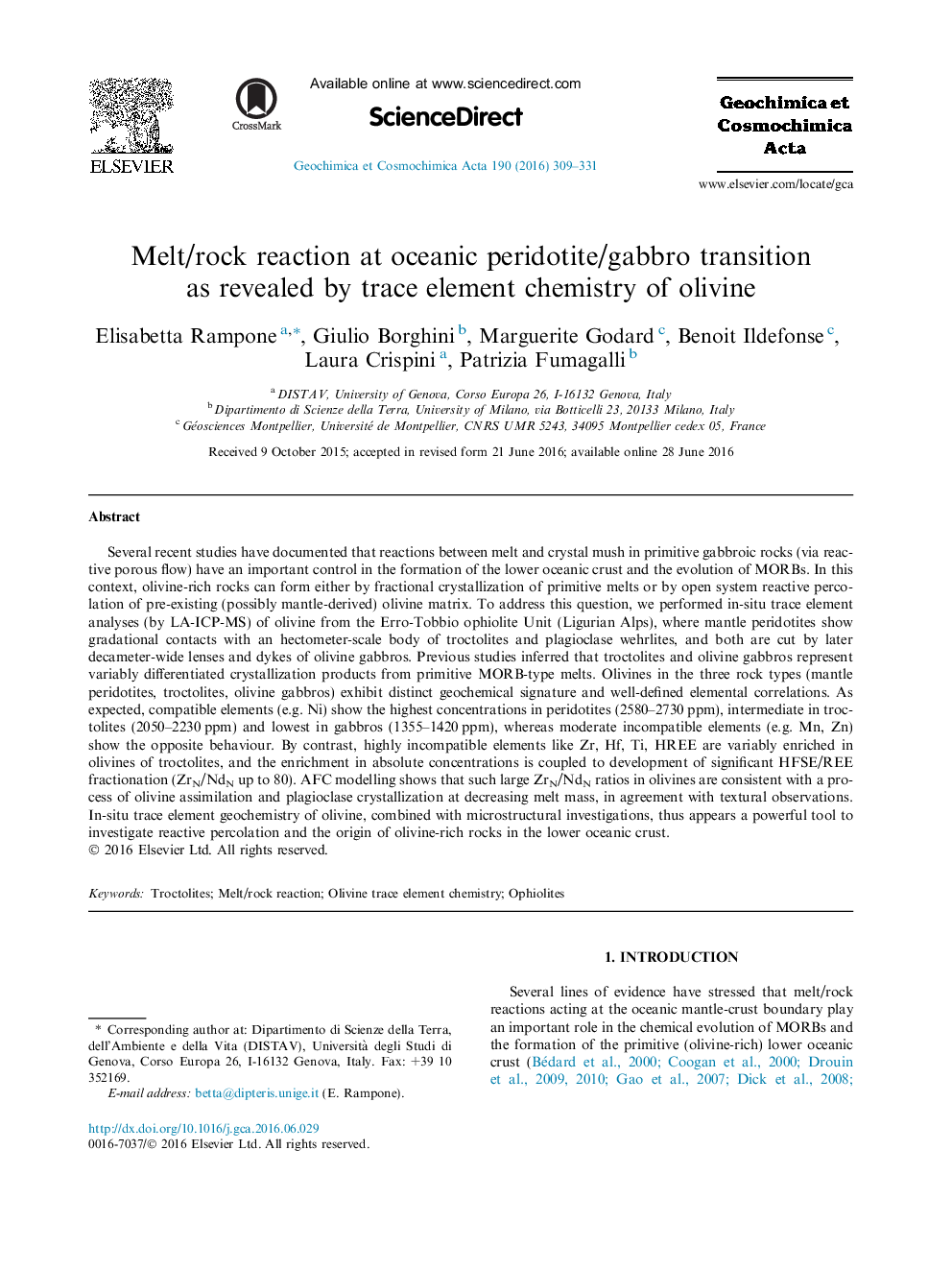| کد مقاله | کد نشریه | سال انتشار | مقاله انگلیسی | نسخه تمام متن |
|---|---|---|---|---|
| 4701755 | 1637967 | 2016 | 23 صفحه PDF | دانلود رایگان |
Several recent studies have documented that reactions between melt and crystal mush in primitive gabbroic rocks (via reactive porous flow) have an important control in the formation of the lower oceanic crust and the evolution of MORBs. In this context, olivine-rich rocks can form either by fractional crystallization of primitive melts or by open system reactive percolation of pre-existing (possibly mantle-derived) olivine matrix. To address this question, we performed in-situ trace element analyses (by LA-ICP-MS) of olivine from the Erro-Tobbio ophiolite Unit (Ligurian Alps), where mantle peridotites show gradational contacts with an hectometer-scale body of troctolites and plagioclase wehrlites, and both are cut by later decameter-wide lenses and dykes of olivine gabbros. Previous studies inferred that troctolites and olivine gabbros represent variably differentiated crystallization products from primitive MORB-type melts. Olivines in the three rock types (mantle peridotites, troctolites, olivine gabbros) exhibit distinct geochemical signature and well-defined elemental correlations. As expected, compatible elements (e.g. Ni) show the highest concentrations in peridotites (2580–2730 ppm), intermediate in troctolites (2050–2230 ppm) and lowest in gabbros (1355–1420 ppm), whereas moderate incompatible elements (e.g. Mn, Zn) show the opposite behaviour. By contrast, highly incompatible elements like Zr, Hf, Ti, HREE are variably enriched in olivines of troctolites, and the enrichment in absolute concentrations is coupled to development of significant HFSE/REE fractionation (ZrN/NdN up to 80). AFC modelling shows that such large ZrN/NdN ratios in olivines are consistent with a process of olivine assimilation and plagioclase crystallization at decreasing melt mass, in agreement with textural observations. In-situ trace element geochemistry of olivine, combined with microstructural investigations, thus appears a powerful tool to investigate reactive percolation and the origin of olivine-rich rocks in the lower oceanic crust.
Journal: Geochimica et Cosmochimica Acta - Volume 190, 1 October 2016, Pages 309–331
